I've heard a number of stories and remarks of officers on either side of the US Civil War owning European military swords, some even Napoleonic in origin. I suppose this was a result of officers being responsible for purchasing much of their own equipment but is their any way to know how common these private purchases were?
I do know that some quantity of swords were imported from England by the confederacy.
I've seen many a German (Solingen) sabre blade mounted in a regulation hilt, as well as entire German-made private purchase sabres (although how many are 'genuine' Solingen blades is open to question).
Let's not forget, too, that US swords of this period were based on French designs (the 1840s 'wristbreaker' cavalry sabre which was carried on both sides, for instance, was modelled on the French 1822 cavalry sabre).
I guess, until swords were considered 'obsolete' in the latter stages of the war, you got your swords where you could find them (more so for the Confederacy) so European-made swords, and more frequently blades, seem relatively common judging by what has survived in museums and collections (and on the internet....).
Julian
Let's not forget, too, that US swords of this period were based on French designs (the 1840s 'wristbreaker' cavalry sabre which was carried on both sides, for instance, was modelled on the French 1822 cavalry sabre).
I guess, until swords were considered 'obsolete' in the latter stages of the war, you got your swords where you could find them (more so for the Confederacy) so European-made swords, and more frequently blades, seem relatively common judging by what has survived in museums and collections (and on the internet....).
Julian
There were hundreds of thousands of imported swords used during the American Civil War. A good many of those were of patterns accepted as standard federal types ranging from officer's swords to the most simple musician's swords.
As to non regulation and favored swords by immigrants in America fighting the war, a couple of names come pretty quickly to my mind but there are certainly more that could be mentioned
Heros von Borcke in gray and Franz Sigel in blue kind of epitomize two who had come to America with earlier experience of continental flavor. Attached are a couple of standard shots of the two men with long straight swords. Seigel was a school teacher after leaving the homeland, while Borcke could have been more regarded a professional soldier. Histories for both are interesting reading. Sigel was to pick up where Lyon was killed at Wilson's Creek.
Something I wrote in a thread in 2004 follows..............
"Germans in the Civil War: I goes to fight mit Sigel, by William Keel
http://www.ku.edu/kansas/ford/keel.html (Edit for 2009 url update)
http://www.skyways.org/orgs/fordco/keel.html
Missouri In The Civil War, Chapter VI
http://www.civilwarhome.com/missouri6.htm
"He entered Springfield with a good deal of medieval display. His escort, which was composed of St. Louis German butchers, remarkable for their size and ferocious aspect, was mounted on powerful iron-gray horses and armed with big revolvers and massive swords, and thus accoutered dashed through the streets of the little town, which was held by…"
~~~~~~~~~~~~~~~~~~~
There are a few period written histories of Lyon and his squad of bodyguards but the swords are never clearly described. However, likes such as Wade Hampton also carried a big straight sword.
My own generic Solingen "wristbreaker" and a French 1854 dragon kind of fall into those types. Both sides of the conflict fielded swords from several countries and at the onset, pretty much what was on hand from local arsenal stores. Truly, any sword made up until that war could be considered as possible, while very few (comparatively) can tagged absolutely as having been there.
There are several sites that can show the sheer numbers of swords contracted by the north but not surprisingly, most found today will be found as never having been sharpened.. Artillery (small and large) and disease responsible for most of the casualties.
Cheers
GC.
 Attachment: 106.47 KB
Attachment: 106.47 KB

 Attachment: 30.87 KB
Attachment: 30.87 KB
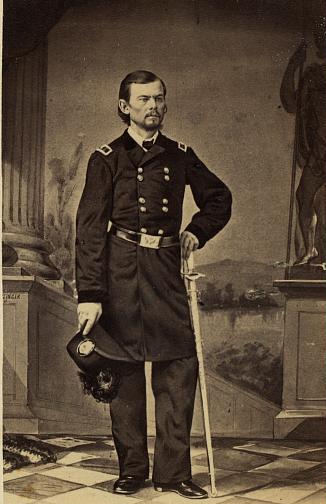
 Attachment: 35.14 KB
Attachment: 35.14 KB
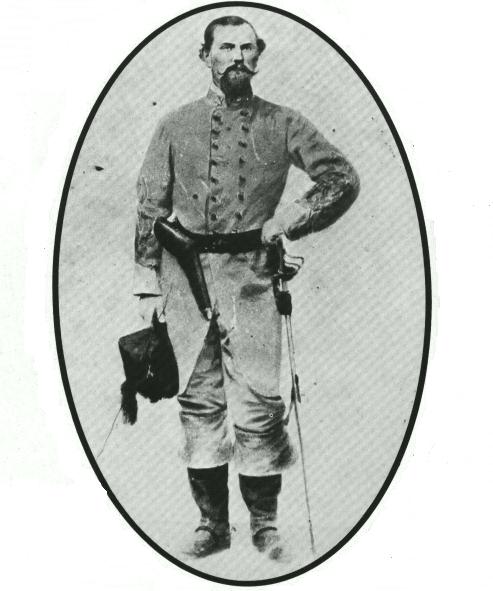
As to non regulation and favored swords by immigrants in America fighting the war, a couple of names come pretty quickly to my mind but there are certainly more that could be mentioned
Heros von Borcke in gray and Franz Sigel in blue kind of epitomize two who had come to America with earlier experience of continental flavor. Attached are a couple of standard shots of the two men with long straight swords. Seigel was a school teacher after leaving the homeland, while Borcke could have been more regarded a professional soldier. Histories for both are interesting reading. Sigel was to pick up where Lyon was killed at Wilson's Creek.
Something I wrote in a thread in 2004 follows..............
"Germans in the Civil War: I goes to fight mit Sigel, by William Keel
http://www.ku.edu/kansas/ford/keel.html (Edit for 2009 url update)
http://www.skyways.org/orgs/fordco/keel.html
Missouri In The Civil War, Chapter VI
http://www.civilwarhome.com/missouri6.htm
"He entered Springfield with a good deal of medieval display. His escort, which was composed of St. Louis German butchers, remarkable for their size and ferocious aspect, was mounted on powerful iron-gray horses and armed with big revolvers and massive swords, and thus accoutered dashed through the streets of the little town, which was held by…"
~~~~~~~~~~~~~~~~~~~
There are a few period written histories of Lyon and his squad of bodyguards but the swords are never clearly described. However, likes such as Wade Hampton also carried a big straight sword.
My own generic Solingen "wristbreaker" and a French 1854 dragon kind of fall into those types. Both sides of the conflict fielded swords from several countries and at the onset, pretty much what was on hand from local arsenal stores. Truly, any sword made up until that war could be considered as possible, while very few (comparatively) can tagged absolutely as having been there.
There are several sites that can show the sheer numbers of swords contracted by the north but not surprisingly, most found today will be found as never having been sharpened.. Artillery (small and large) and disease responsible for most of the casualties.
Cheers
GC.



Last edited by Glen A Cleeton on Sat 07 Jan, 2012 4:51 pm; edited 2 times in total
Anmother example of a run what you brung came to light in seeing a listing for this photo. A quite old sword from decades before the ACW being fielded by this young man.
[ Linked Image ]
[ Linked Image ]
[ Linked Image ]
Concerning British swords in the confederacy, it gets a little blown out of proportion but did occur. The same is true for any unmarked Solingen sword, including my own generic. There are more falsely attributed swords out there on the market than truly were and that turns up at time either from swords marked when they should not have been, or stamped with modern tools. A fair number of French made swords get scrubbed of their manufacture date from the spine of their blades. Others as common as very late aAmerican patterns being stamped with civil war inspector's marks.
Another good plate I have somewhere is a federal surgeon wearing an older eaglehead pommel.
Buyer beware ;)
Cheers
GC
 Attachment: 85.58 KB
Attachment: 85.58 KB
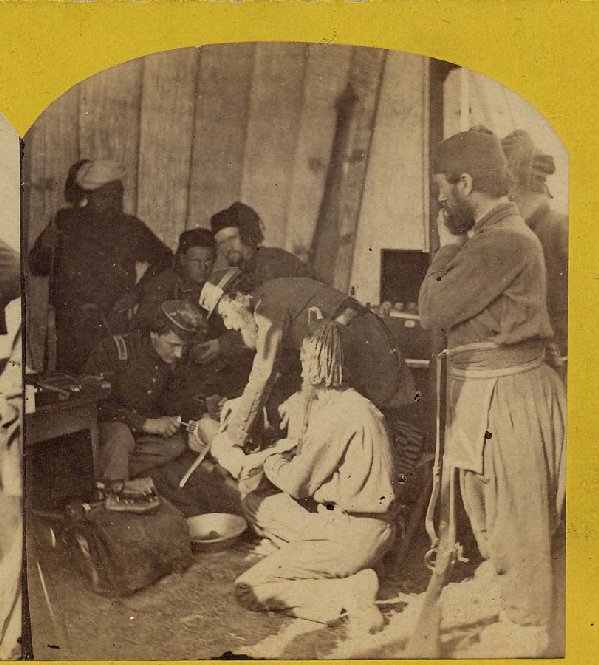
[ Linked Image ]
[ Linked Image ]
[ Linked Image ]
Concerning British swords in the confederacy, it gets a little blown out of proportion but did occur. The same is true for any unmarked Solingen sword, including my own generic. There are more falsely attributed swords out there on the market than truly were and that turns up at time either from swords marked when they should not have been, or stamped with modern tools. A fair number of French made swords get scrubbed of their manufacture date from the spine of their blades. Others as common as very late aAmerican patterns being stamped with civil war inspector's marks.
Another good plate I have somewhere is a federal surgeon wearing an older eaglehead pommel.
Buyer beware ;)
Cheers
GC

Thank you for sharing your pictures. What originally inspired me was a story about a confederate cavalry officer with a French cuirassier's sword.
Wade Hampton probably gets the most press and discussion about his big sword but he had several different swords in life. His biggie was not Napoleonic but rather an extension of those traits. The French system of cavalry actually included four arms by mid century, three straight ones pretty much identical except for blade length. IIRC, the carabiniers had the longest of the French with the dragons and cuirassier's blades a smidge shorter . In the foggy reaches of my mind, The big Wade Hampton sword was not even a French build but I could be mistaken.
There were 1816 blades applied to the French 1854 hilts and they are notable due to the points being asymmetrical from shortening them. My dragon is an officer's version with a horn grip instead of leather and wire on wood. While the blade lacks a date on its spine, the poincons on the blade and hilt fall in the period of the ACW. It is funny because the day I bought it at a show, a competitor (Carolina Collectors) jumped me when I had mine in hand and exclaimed "yes, I have one just like Wade Hampton's!" Even more ironicaly, that example showed up for sale on the SFI classifieds with the seller twisting the provenance just a bit.
http://www.swordforum.com/forums/showthread.p...h-Dragoon.
Believe me, I know Rick Burton (CC) from discussions and a different purchase through him and know his blurb was not as this fellow has now been selling it.
http://www.ccrelics.com/shop/home.asp?
The highlights of the war become so romanticized at times that the enthusiasm kind of overshadows the truths at times.
Cheers
GC
 Attachment: 73.67 KB
Attachment: 73.67 KB
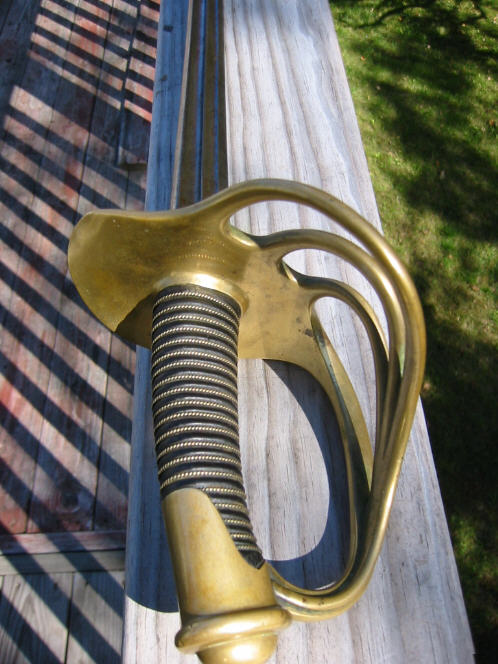
 Attachment: 69.05 KB
Attachment: 69.05 KB

 Attachment: 60.42 KB
Attachment: 60.42 KB
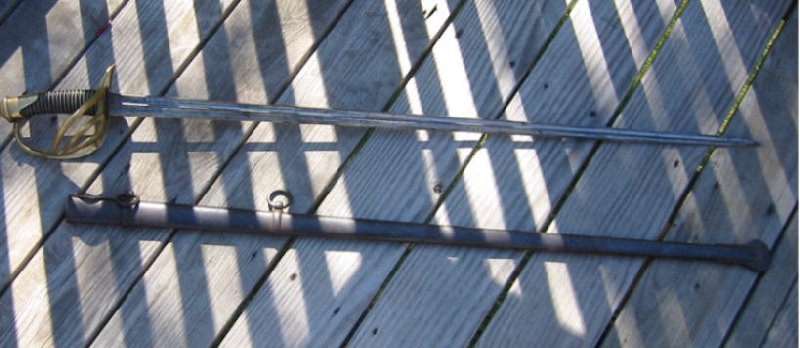
There were 1816 blades applied to the French 1854 hilts and they are notable due to the points being asymmetrical from shortening them. My dragon is an officer's version with a horn grip instead of leather and wire on wood. While the blade lacks a date on its spine, the poincons on the blade and hilt fall in the period of the ACW. It is funny because the day I bought it at a show, a competitor (Carolina Collectors) jumped me when I had mine in hand and exclaimed "yes, I have one just like Wade Hampton's!" Even more ironicaly, that example showed up for sale on the SFI classifieds with the seller twisting the provenance just a bit.
http://www.swordforum.com/forums/showthread.p...h-Dragoon.
Believe me, I know Rick Burton (CC) from discussions and a different purchase through him and know his blurb was not as this fellow has now been selling it.
http://www.ccrelics.com/shop/home.asp?
The highlights of the war become so romanticized at times that the enthusiasm kind of overshadows the truths at times.
Cheers
GC



Page 1 of 1
You cannot post new topics in this forumYou cannot reply to topics in this forum
You cannot edit your posts in this forum
You cannot delete your posts in this forum
You cannot vote in polls in this forum
You cannot attach files in this forum
You can download files in this forum
All contents © Copyright 2003-2006 myArmoury.com — All rights reserved
Discussion forums powered by phpBB © The phpBB Group
Switch to the Full-featured Version of the forum
Discussion forums powered by phpBB © The phpBB Group
Switch to the Full-featured Version of the forum